Benefits and selection rules
Today, on the shelves of garden stores, you can find a lot of preparations for plant care, which accelerate the growth of crops, protect against pests and diseases. Such drugs should not be neglected when trouble has already overtaken an indoor or garden plant.
But still, to activate natural processes in the plant itself, awaken its defenses, immunity, you should pay attention to the drug Epin Extra
Phytohormone Epin belongs to the 4th hazard class. This class of danger includes drugs that have practically no harmful value for humans and beneficial insects, in particular, bees. One of the advantages of this drug is that Epin does not harm the environment.
However, minimal precautions should be taken when working with such a plant immune system stimulant.
When buying an anti-stress drug, you should:
Pay attention to the date of issue and expiration dates. Usually the expiration date of the stimulant is 3 years from the date of manufacture.
See if the Epin is stored correctly at the point of sale
If the sun's rays enter the display case, you should abandon the purchase, since the drug, under such storage conditions, most likely has lost its effectiveness.
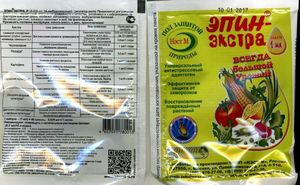 For home use and one-time processing, it is worth choosing ampoules of the smallest volume. This is usually 1 ml or 2 ml. The cost of such a volume of an immunostimulant can vary from 10 to 25 rubles. Epin is a fairly popular drug; you can buy it at any garden-themed store.
For home use and one-time processing, it is worth choosing ampoules of the smallest volume. This is usually 1 ml or 2 ml. The cost of such a volume of an immunostimulant can vary from 10 to 25 rubles. Epin is a fairly popular drug; you can buy it at any garden-themed store.
Biostimulator of the immune system of plants Epin is a drug, the use of which will help to avoid and prevent many troubles that arise when growing home flowers and garden crops. The action of this drug is aimed at the healthy development and growth of various green crops, while also showing protective functions.
The special effect of the drug is felt in stressful situations: plants react painlessly to adverse environmental conditions, climate change, drought or excess moisture, as well as frost. The use of Epin throughout the growing season has a beneficial effect on various garden crops, as well as indoor flowers.
Originally posted 2018-02-18 14:20:03.
Application features
For flowers at home breeding, the Epin-extra biostimulator is used in two cases.
- In order to enhance plant growth. Spraying is performed three times: in early spring, in the middle of summer and in October. In winter, the drug is not used, since house flowers, like all other plants, enter a dormant phase during this period, and they do not need rapid growth.
- To improve adaptation when transplanting or during the period when you bought a new plant and brought home. In such cases, it makes sense to spray an indoor flower once a month. The deadline for such procedures is October.

Many novice flower growers believe that Epin-extra is such a universal plant food, along with mineral fertilizers. But despite the fact that the phytohormone really improves the growth and development of green pets, it would be wrong to purposefully use it as a fertilizer. The manufacturer advises supplementing plant nutrition with mineral fertilizers and Epin-extra treatments - both of these approaches will provide excellent results.First, an indoor flower is watered with a solution of complex fertilizers, then the soil is carefully loosened, the next step is spraying the foliage and shoots with phytohormone.
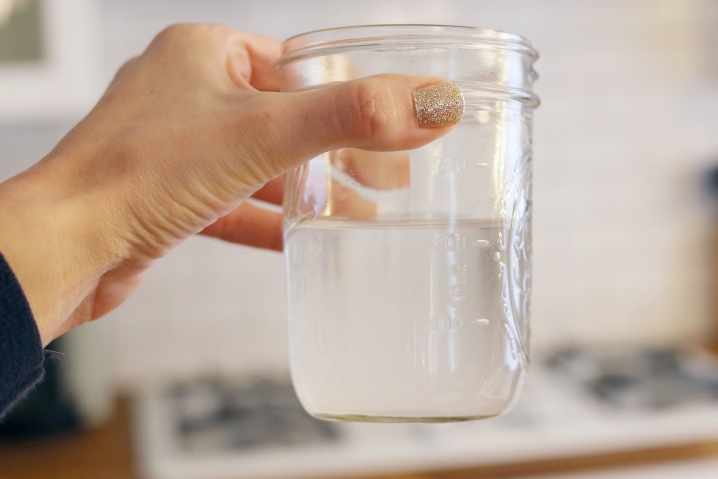
Experienced flower growers often grow indoor plants from seeds or bulbs at home. In this case, the Epin-extra biostimulator greatly simplifies the task associated with the germination of planting material.
- To improve the germination of flower seeds, the working solution should exceed their total weight by about 100 times. The concentration of the aqueous solution is 1 ml / 2000 ml. The processing time of seeds depends on their structure. If the seeds quickly absorb moisture and swell, then 5-7 hours of exposure will be quite enough for them, and in the case when the outer shell of the seeds is dense, they will need to be kept in the solution for 15-18 hours.
- The processing of flower bulbs at the same concentration of solution as for seeds is carried out by soaking for a period of at least 12 hours.
- For the successful growth of seedlings, spraying with a working solution prepared at the rate of 0.5 ml / 2500 ml is used. Such a volume will be sufficient to process a large number of seedlings, and if you have little of it, then the amount of water and preparation should be proportionally reduced.

Florists who use phytohormonal preparations similar to "Epin-extra" note that the substance epibrassinolide acts in comparison with them much softer and more effective. The results of the positive effect of the drug on the plant are noticeable in a very short time.
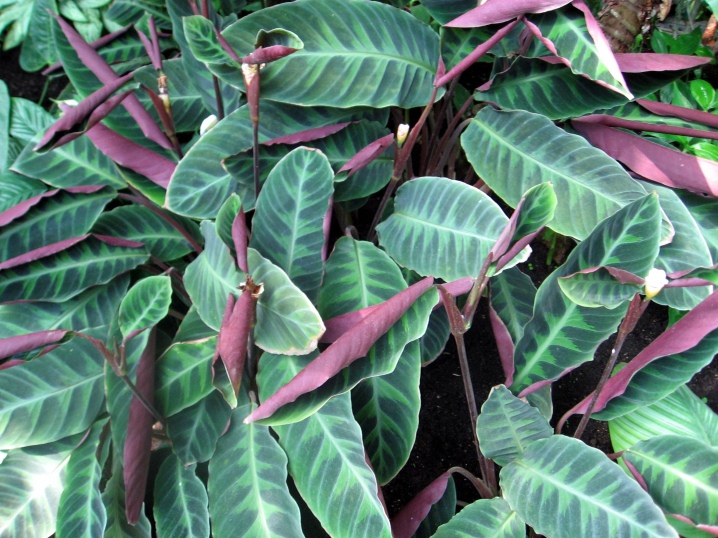
Analogues of "Epin"
"Epin" can be considered as one of the best and most effective "potions", but it is not the only fertilizer that can benefit plants. It happens that there is no way to use "Epin", and then you need to know its analogues so that you can use something else.
This, for example, "Zircon". A biostimulant containing ordinary medical alcohol with specific acids. As well as the preparation of interest to us, "Zircon" is recommended to be stored and cooked in a dark place inaccessible to the rays of the sun. And it is also necessary to use it "in the darkness of the night." By the way, it smells (oddly enough) of alcohol, it looks like a yellow-green color.
"Zircon" is allowed green light at any stage of plant development, in addition, it is harmless to humans. What else is the plus of "Zircon", so it is in its full compatibility with the lion's share of fertilizers. Such manipulation not only does not bear negative consequences, but, on the contrary, mutually reinforces the functions of the drugs.
Another analogue of Epin is Ecosil. It increases cold resistance, bush endurance (it tolerates heat and / or moisture better). Improves flowering, increases yield, develops immunity to diseases and pests. Dilute Ecosil in a ratio of 120 drops of the drug per liter of water. Like Epin, a noticeable effect from the use of this product occurs approximately two to three days after spraying. Speaking of Epin's generics, one cannot but mention the following drugs:
- "Sprout" (stimulant for immunity, is used in the pre-planting treatment of seeds and bulbs, accelerates their germination, as evidenced by the name itself).
- "Obereg" (growth regulator, contains polyunsaturated fatty acids).
- "Narcissus" (used to combat lesions).
- "Krezacin" and "Kornevin" (both are stimulants of root formation, the latter can be used even in dry form to "dust" cuttings before planting).
Humates are often used as analogs - sodium, potassium or humate +7 (the latter is a microfertilizer, in addition to humates, containing seven very important trace elements in combination with humic acids).
Humates are acids that are obtained in soil from peat or brown coal when plant cellulose decomposes. Many people confuse them with fertilizers, but this is not entirely true.Humates are very useful not only for flora, but also for soil, because they improve its structure and give more opportunities for water and air to enter the ground. As for green organisms, humates are good for them because they normalize metabolic processes and increase the rate of protein synthesis. The advantage of these acids is that they are environmentally friendly. It is impossible to store the humate solution for more than a week.
"Baikal-EM-1" is also popular - a preparation with lactic acid bacteria at its core. It restores soil fertility, improves its structure, increases productivity and even seed germination. The solution is made from the ratio of one tablespoon to a bucket of water, the plant is treated with it once a week.
How to store?
Epin is a chemical product, so it should be stored in a place where children and animals cannot access. It is best to use a lockable drawer. Choose a dark place for storing the drug so that direct sunlight does not seep into it. The maximum shelf life of Epin is 3 years from the date of production.
Since the dosage of the drug used is very small, after opening the ampoule, its contents must be placed in a medical syringe. Discard the ampoule after the procedure, and empty the syringe as needed. You can store it in a cool place or in plastic.
short info
The drug "Epin" is a generic natural biostimulant, only artificial. It brings into work the protective functions of the plants themselves. Thus, they develop immunity against "aggression" from nature and various bacteria. Any culture that has been treated with a miracle cure becomes not only more enduring, but also more fertile. According to statistics, such inflorescence flowers yield a yield 10-15 percent higher than their "congeners". Moreover, the harvest ripens about two weeks earlier than expected.

It is worth noting that the Epin fertilizer, which is now on the market, is an improved version of the first Epin. The original version was discontinued sixteen years ago due to counterfeits.
Today's drug is "officially" called "Epin-extra", but for convenience they prefer to call it simply "Epin".
Advantages and disadvantages
Has the following advantages:
- non-toxic;
- promotes the harmonious development of the plant;
- increases protective properties, developing immunity to certain diseases, for example, powdery mildew, scab and others;
- improves the quality of the fruit;
- makes the plant fast-growing, strong, strong;
- increases productivity;
- reduces the amount of heavy substances in the soil;
- helps fast rooting;
- stimulates the growth of seedlings, ovaries;
- normalizes material metabolism in plants even under unfavorable conditions;
- profitability;
- efficiency;
- ease of use.
Among the disadvantages, one can single out the fact that it must be used together with other fertilizers.
Epin for the garden
The range of possibilities for using epin in the garden or in the garden is so great that I will not be able to describe everything in one article, and I'm not sure if this is necessary.
I will tell you only about some points.
- Which gardener doesn't like petunia? I think that there are few of them, but experienced summer residents still know how difficult it is to grow petunias from seeds. Epin, in this matter, is your most faithful assistant. Soaking the seeds of this flower is unlikely to work, since they are very small, but spraying the first shoots, and then processing during the first dive, will significantly save you time and nerves, because there will be much less dead plants, and you will plant a blooming plant in the garden seedlings.
- Another beloved, but extremely capricious beauty who will be grateful to you for the treatment with this preparation is a rose. Dosage for spraying 1 ml per 5 liters of rainwater.Spraying is carried out in unfavorable weather, increasing the plant's resistance to recurrent frosts. You can spray roses during the budding period. Soaking cuttings in an epin solution for just a day significantly increases their chances of rooting. In this case, the solution is made more concentrated with 0.25 ml per 1 liter of water.
- Many people are familiar with sunburn on conifers. Thuja often suffer from this. Treatment with epin, accelerates the recovery of the tree after a burn, and the yellowed part becomes greener before our eyes. The only thing is that a simple treatment with a solution will not be enough, it is necessary to maintain moisture in the root system. The dosage for spraying conifers is the usual 1 ml per 5 liters of water. After, treatment with zircon is necessary.
You can talk a lot about epin, I already wrote that the scope of its application is extremely wide. It would be easier to say why it cannot be used, but it will not work. Since scientists, and summer residents, gardeners, unanimously argue that the drug is so useful, safe that it will help absolutely any plant.
Step by step instructions on how to use
Features of Zircon in its powerful anti-stress effect. The resulting solution is used for spraying the leaves, not watering.
How to choose a dosage?
To prepare a solution, it is necessary to combine 1 ampoule of the product with 5 liters of water. The resulting solution cannot be stored for more than 5 days.
How to dilute?
Zircon is diluted clearly according to the instructions with boiled water at room temperature, taking into account the following conditions:
- Plant cuttings, restoration of immunity and prevention of diseases. Keep the cuttings in the prepared solution for about 12 hours. You can prepare the composition if you combine 0.25 ml of the drug with 1 liter of water.
- Plant picking at seed reproduction. Zircon treatment is carried out to increase the viability of seedlings. It should be carried out after the formation of 2-3 pairs of leaves. To obtain a solution, dilute one ampoule of the drug in 10 liters of water.
- Foliar treatment of an adult flower during the growing season. Zircon improves the decorative qualities of the orchid, stimulates the laying of buds, the growth of the root system and peduncles. To prepare the solution, use the recipe for the pick. Watering is carried out every 2-3 weeks.
- Treatment of a plant after a disease and pest attacks. Combine 10 liters of water and 1 ampoule of the product. Perform the treatment with the resulting solution until complete recovery.
You should not use tap water to prepare the solution, as it has alkaline properties that will inhibit the effect of Zircon.
When diluting the drug, you need to add a little citric acid, which neutralizes the alkaline properties of water.
How to apply?
Zircon is a biostimulant used for foliar overhead treatment of orchids. Its active components are absorbed by all elements of the flower in the shortest possible time. The solution spreads very quickly and has an immediate effect.
The drug is produced in the form of 1 ml ampoules
They contain a concentrated substance that must be diluted with all precautions. How to breed correctly?
- Water the flower thoroughly before processing with Zircon.
- It is best to use the immersion method for irrigation, when the container with the plant is placed in a basin in hot water.
- After such watering, you need to prepare a solution, depending on what result you want to achieve.
- Water the flower with the solution, wait for the glass to water.
- Put the pot in its original place.
How many minutes to keep in solution?
If the treatment is carried out when cutting an orchid, then keep the cuttings in a solution for 18-24 hours.
If seed reproduction of an orchid occurs, then the duration of the procedure will be 6-8 hours.
How often should the procedure be repeated?
The frequency of manipulation depends on the purpose of using the drug:
- prevention - 1 watering every 1.5-2 months;
- after stress (transplant, illness, pests) - spraying once a week until the appearance of a visible result.
Step by step instructions for use
The exact algorithm for use is indicated on the packaging of the drug.
How to choose a dosage?
In the instructions, which is indicated on the packaging of the product, it is written that one ampoule is diluted in 5 liters of boiled water. But already experienced flower growers recommend slightly reducing the concentration of the finished solution (0.8 ml per 5 liters of water is enough).
Reference! In no case should the dosage be exceeded, this threatens the death of culture.
How to breed?
Water is used only boiled or settled. We have already said that you can take tap water, but in this case you need to reduce its alkalinity by adding a few crystals of citric acid.
How to apply the solution, can I spray it?
A pot with an orchid is dipped into the prepared solution. It can also be used when transplanting a plant.
To strengthen the root system and immunity of all orchids, the rhizomes are rinsed in a stimulator.
It will not be superfluous to wipe the leaves with Epin.
You can also spray phalaenopsis with ready-made liquid
But at the same time, it is important to ensure that drops do not fall into the leaf sockets.
How many minutes to keep in solution?
The exposure time ranges from 10 minutes to two hours. It all depends on the condition of the orchid. If the florist regularly uses Epin, and at the same time the orchid grows luxuriantly and abundantly, then 10 minutes is enough as a preventive measure. If the leaf plates turn pale or flowering has not occurred for a long time, it is better to hold the phalaenopsis for all two hours.
An increase in the holding time by more than two hours does not threaten the plant with wilting. But it is better to rinse the substrate under running water, and refrain from using the stimulant for the next 3-4 weeks.
How often should the procedure be carried out?
Frequent use of Epin is not recommended. The orchid will have enough stimulation only during the growing season, as well as 4 weeks before the onset of the dormant period (usually it occurs in late autumn). These treatments are considered mandatory.
At the request of the grower, stimulation can be carried out during flowering (once a month), as well as during transplantation or when the culture is damaged by pests and diseases (Epin will not be able to destroy infections and parasites, but it will significantly increase the defenses of phalaenopsis).
Misuse and dealing with the consequences
The only mistake when using Epin is to overdose it. But even this mistake is not fatal to the plant. To restore the culture, you need to stop using the stimulant for 1-1.5 months.
Compatibility of Zircon with other fertilizers
Attention! Zircon is used as an additive to the main one, since it has only a preventive effect.
Schemes of use and connection of drugs: Epin, Zircon, Cytovit, Ferovit - video
The preparation of the active solution is standard:a bucket of clean water + 1 ampoule of the product. Before combining drugs, you need to check their compatibility. If there is sediment during mixing, it is a sign of incompatibility. Especially carefully check for feeding petunias.
To make the cut flowers stand in the vase longer and delight with their fresh appearance and aroma, a small amount of Zircon is added to the water (from 2 to 3 drops).
How to dilute?
The drug "Epin-extra" is produced in plastic ampoules with a volume of 1 ml, equipped with a lid, so that the concentrated solution can be taken strictly in the required amount. The ampoule is packed in a bag containing detailed instructions for the use of the drug. A phytohormonal agent in a concentrated form is not used; it must be diluted to spray the aerial parts of plants, where the agent is absorbed through leaf plates. For watering "Epin-extra" is unsuitable, since the root system of the plant does not assimilate it.
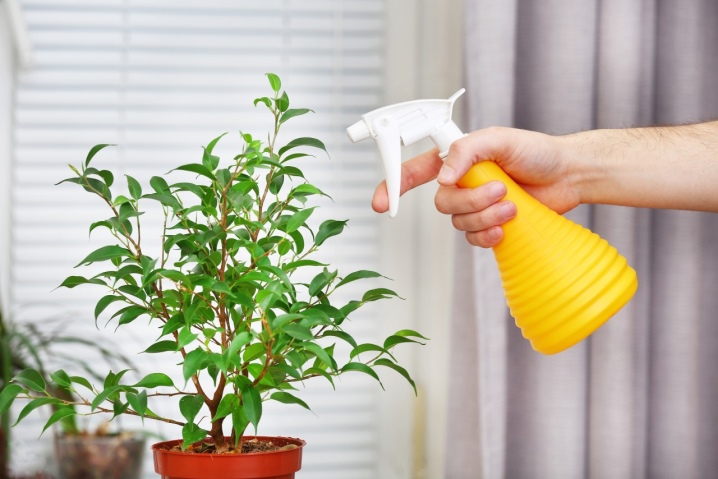
Despite the fact that the product has a hazard class 4, that is, it is non-toxic, before starting work with the steroid hormone epibrassinolide, it is required to use personal protective equipment for the skin, eyes and respiratory tract.
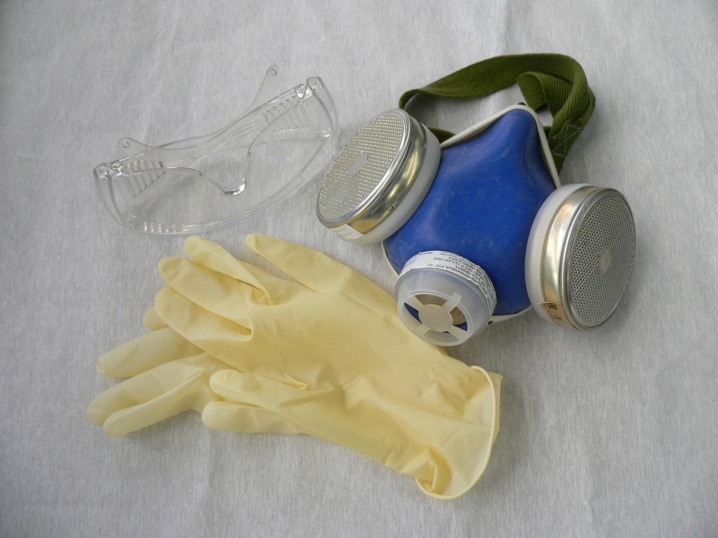
Consider the procedure for preparing the working solution.
- Carefully study the instructions for use of the drug and choose the concentration required for the treatment of indoor plants.
- Prepare a measuring container, a wooden stirring stick and a pipette.
- Pour warm boiled water into a container and add a little citric (0.2 g / 1 l) or acetic acid (2-3 drops / 1 l). This is necessary in order to inactivate the possible content of alkali in the water, in the presence of which the drug loses its biological activity.
- Wear rubber gloves, a respirator and goggles.
- Using a pipette, take the required amount of the drug from the ampoule and transfer it to a measuring container with prepared acidified water. Then stir the composition with a stick.
- Pour the prepared solution into a spray bottle and start spraying indoor plants. This is best done with windows open, or with flowers outside.
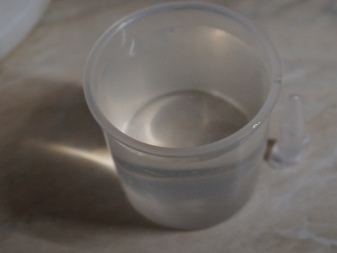
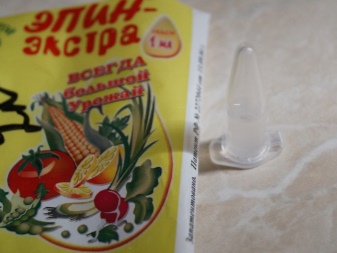
The safety of using the Epin-extra biostimulator for indoor plants is indisputable, but the manufacturer warns that an excessive concentration of the epibrassinolide substance is not recommended for use. To the same extent, it is not worthwhile to deliberately reduce the dosage of the drug when preparing solutions, since at low concentrations the declared effect may not fully manifest itself. The maximum amount of the product dissolved in 1 liter of water is considered to be 16 drops, and for 5 liters of solution, you can safely use the entire ampoule.
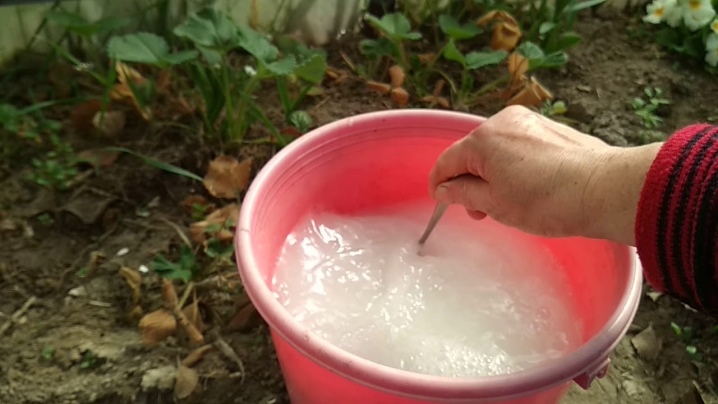
How to increase the yield of potatoes?
Potatoes in Russia are one of the most demanded agricultural crops. Its growth, development and productivity are significantly influenced by both lack and excess of moisture, high or low temperatures, as well as high susceptibility to pathogens. The average potato yield in our country is 15-17 t / ha, while the potential of this crop makes it possible to obtain 40-50 t / ha or more, potato yields can be increased using plant growth regulators, for example, such as Epin-Extra and Zircon ...
Epin-Extra is an anti-stress adaptogen. It contributes to the regulation by the plants themselves of the synthesis of bioactive substances that they need at every stage of development. The drug increases the content of antioxidant enzymes in plants, increasing their resistance to stress factors of the external environment (frost, excessive moisture, etc.), as well as diseases, showing the properties of a nonspecific immunomodulator.
Zircon is a mixture of natural hydroxycinnamic acids and their derivatives. Its growth-regulating effect is associated with the protection of indoleacetic acid (IAA) through the mechanism of inhibition of auxin oxidase activity. Antibacterial and fungi-protective actions are mediated by the stimulation of plant immunity. Under stressful conditions, the drug contributes to the replenishment of the missing biologically active compounds of an immunomodulatory and adaptogenic nature.
The use of the growth regulator Epin-Extra (according to VNIIKH) for the treatment of seed tubers and spraying of potatoes in the budding phase contributed to an increase in the total yield by 27.7-51.1% (control 12.0-19.0 t / ha), and the marketable fractions (tubers larger than 30 mm) - by 74.9-87.7%. When analyzing the fractional composition of tubers, a tendency to an increase in the number of tubers with a diameter of 51-80 mm and to a reduction in the fraction of 31-50 mm was revealed.
Agroclimatic conditions in the Moscow region in 2007 and 2010 did not contribute to the active development of fungal diseases. The prevalence of rhizoctonia in the experimental variants was weak and uneven. Nevertheless, the effect of reducing its prevalence on plants was noted in variants with the use of Epin-Extra.The appearance of symptoms of Alternaria on potato plants was noted at the beginning of the second decade of July. Symptoms of late blight in the field were noted only after precipitation. Until August, late blight practically did not develop, and the biological effectiveness of the drug was 100%. The greatest effect in suppressing late blight was obtained in the variant with pre-planting treatment of potato tubers with Epin-Extra (20 ml / t) and spraying of plants during the budding period (80 ml / ha) - 77.2%.
The maximum effect from the use of Zircon was when processing seed tubers (5 ml / t) in combination with double spraying of plants in the phases of full germination and budding (10 ml / ha). The drug has shown high efficiency against late blight and alternaria. Its growth-regulating and immunoprotective action provided a significant increase in potato yield. In these variants, the increase in yield to the control on average over the years of research was 1.9 t / ha or 28% (control 6.8 t / ha).
Plants treated with growth regulators tolerated temperature extremes, changes in soil and air humidity and other unfavorable conditions better. The use of these drugs is accompanied by an increase in yield up to 30%, an increase in the quality and safety of products, and they can also be successfully combined with pesticide treatment. It should be borne in mind that Epin-Extra better increases the resistance of plants to low temperatures and excess moisture, and Zircon - to drought and high temperatures. Therefore, the choice of the drug depends on the weather conditions at the time of the treatments.
Thus, the use of the growth regulator Epin-Extra and Zircon on potatoes can significantly increase the resistance of plants to unfavorable environmental factors, as well as reduce the damage to plants by diseases, and thereby significantly increase the yield.
Vakulenko V.V., candidate of biological sciences, chief specialist of NNPP "NEST M".
For indoor flowers
Epin is easy to use, but there are a few important points to note.
The fact is that in an alkaline environment, the active substance of the drug quickly decomposes, so there will be no benefit if diluted in ordinary tap water.
As I mentioned above, epin is used not only for the vegetable garden, but also for home flowers. Unlike many other stimulants, epin is not used for watering, since it is not absorbed by the roots. They can only spray or soak cuttings, seeds for quick rooting or increased germination.
Indoor plants acquire an exceptionally healthy, decorative appearance after spraying with epin.
- Dosage for indoor plants 1 ml per 5 l of water. Rarely does anyone in the house have so many flowers to use up 5 liters of solution, so it is better to dilute it by 1 liter. Many advise to measure the drug in drops, but I think it is better to have a syringe at home for these purposes, then you are guaranteed to avoid an overdose, which is dangerous for indoor flowers. I use a 1ml syringe, it is very convenient, and most importantly, it is safe!
- Spraying should be done no more than 1 time in 14 days. More often it is pointless and dangerous to do it. Home flowers don't need so much stimulant.
Epin is often used by orchid lovers, because this flower becomes unusually beautiful after processing, it blooms longer and more profusely. In addition, the risk of disease is sharply reduced.


